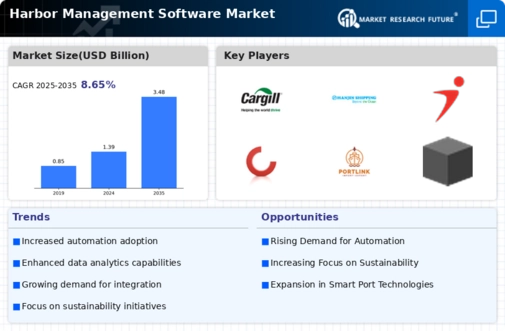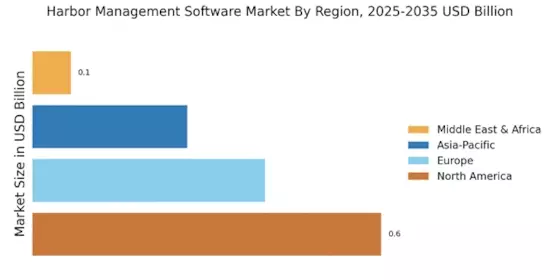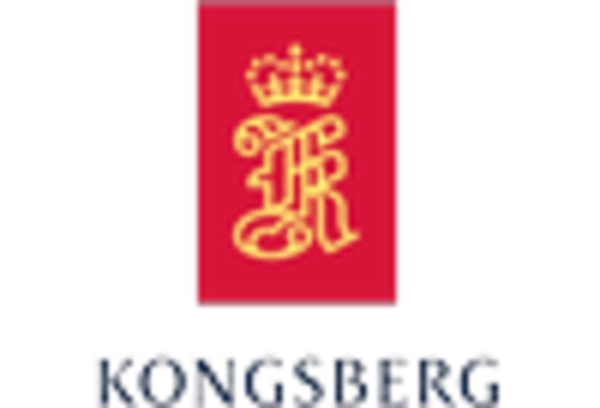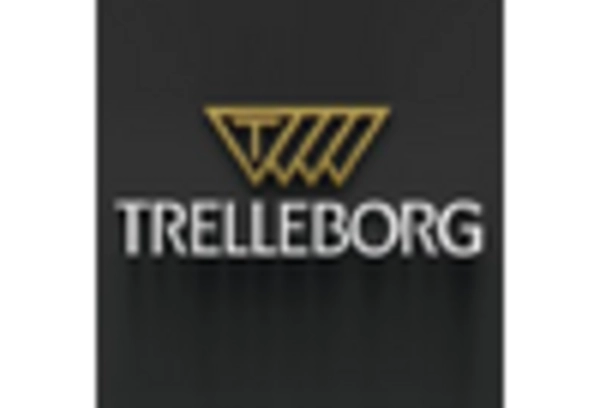Adoption of Advanced Technologies
The Harbor Management Software Market is witnessing a notable shift towards the adoption of advanced technologies such as artificial intelligence and machine learning. These technologies enable ports to analyze vast amounts of data, leading to improved decision-making and operational efficiency. For instance, predictive analytics can forecast traffic patterns, allowing ports to allocate resources more effectively. The integration of these technologies is anticipated to enhance the capabilities of harbor management software, making it more attractive to port authorities. As ports increasingly recognize the value of data-driven insights, the demand for sophisticated software solutions is likely to rise, further propelling the growth of the harbor management software market.
Enhancing Stakeholder Collaboration
The Harbor Management Software Market is evolving to facilitate enhanced collaboration among various stakeholders involved in port operations. Effective communication and coordination between shipping companies, port authorities, and logistics providers are essential for optimizing supply chain processes. Harbor management software solutions are increasingly incorporating features that promote real-time information sharing and collaboration. This trend is likely to improve operational transparency and efficiency, as stakeholders can make informed decisions based on shared data. The growing recognition of the importance of collaboration in port operations is expected to drive the adoption of harbor management software, thereby contributing to the overall growth of the market.
Focus on Environmental Sustainability
The Harbor Management Software Market is increasingly aligning with the global focus on environmental sustainability. Ports are under pressure to reduce their carbon footprints and implement eco-friendly practices. Harbor management software plays a crucial role in this transition by providing tools for monitoring emissions, optimizing resource usage, and managing waste effectively. The software can assist in developing sustainable operational strategies that comply with environmental regulations. As stakeholders prioritize sustainability, the demand for harbor management software that supports these initiatives is expected to grow. This trend not only enhances the reputation of ports but also aligns with broader global efforts to combat climate change.
Regulatory Compliance and Safety Standards
The Harbor Management Software Market is significantly influenced by the need for compliance with stringent regulatory frameworks and safety standards. Governments and international bodies have established various regulations aimed at ensuring safe and efficient port operations. As a result, harbor management software solutions are increasingly being adopted to facilitate compliance with these regulations. The software aids in monitoring and reporting activities, ensuring that ports adhere to safety protocols and environmental guidelines. This trend is likely to drive the market as ports seek to avoid penalties and enhance their reputations. The growing emphasis on safety and compliance is expected to contribute to a robust growth trajectory for the harbor management software market.
Increasing Demand for Efficient Port Operations
The Harbor Management Software Market is experiencing a surge in demand for solutions that enhance operational efficiency at ports. As global trade continues to expand, ports are under pressure to optimize their operations to handle increased cargo volumes. This demand is reflected in the projected growth of the harbor management software market, which is expected to reach a valuation of several billion dollars by 2026. Efficient port operations not only reduce turnaround times but also minimize costs, making harbor management software an essential tool for port authorities and operators. The integration of advanced analytics and real-time data processing capabilities into these software solutions further supports decision-making processes, thereby improving overall port performance.


















Leave a Comment